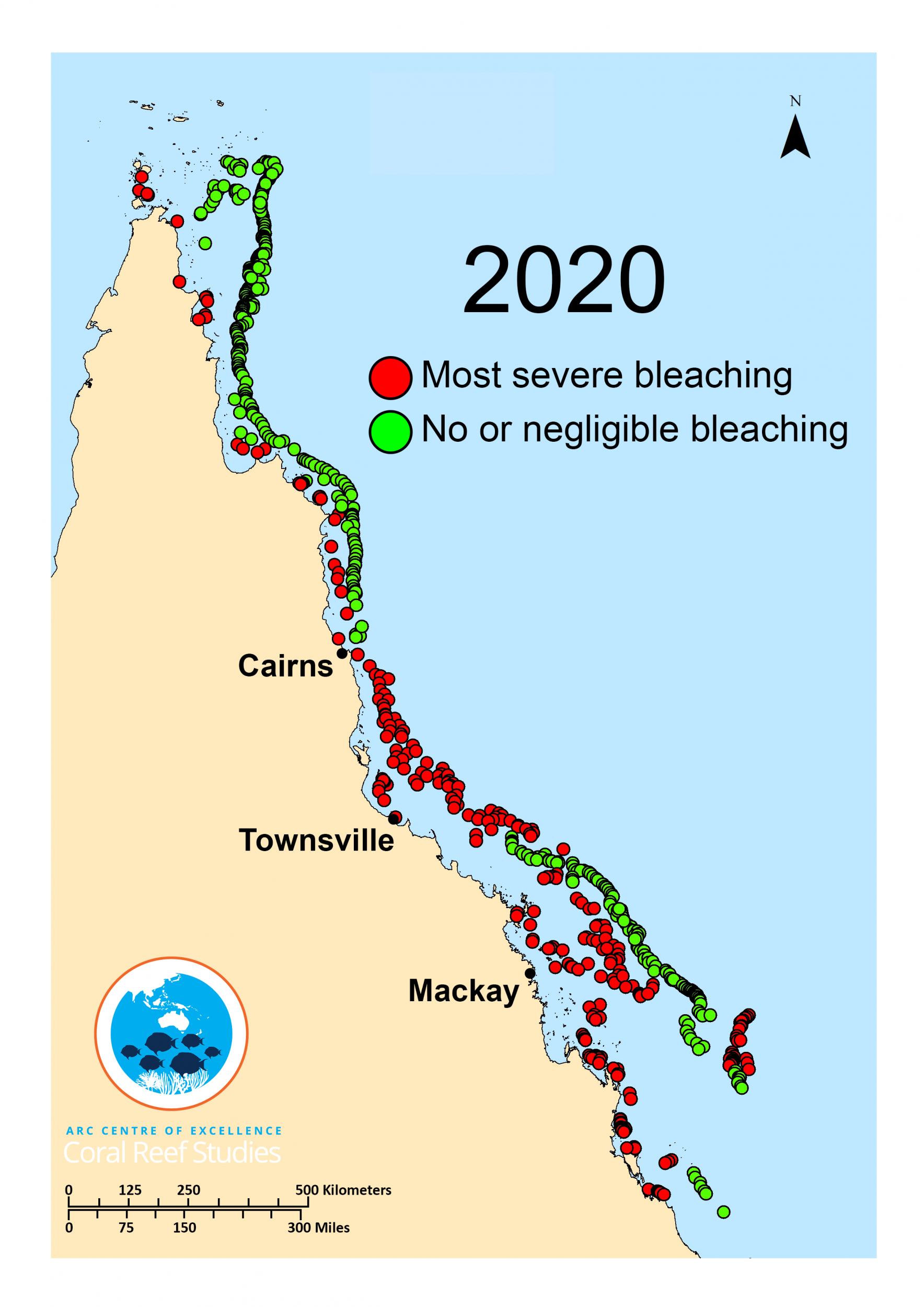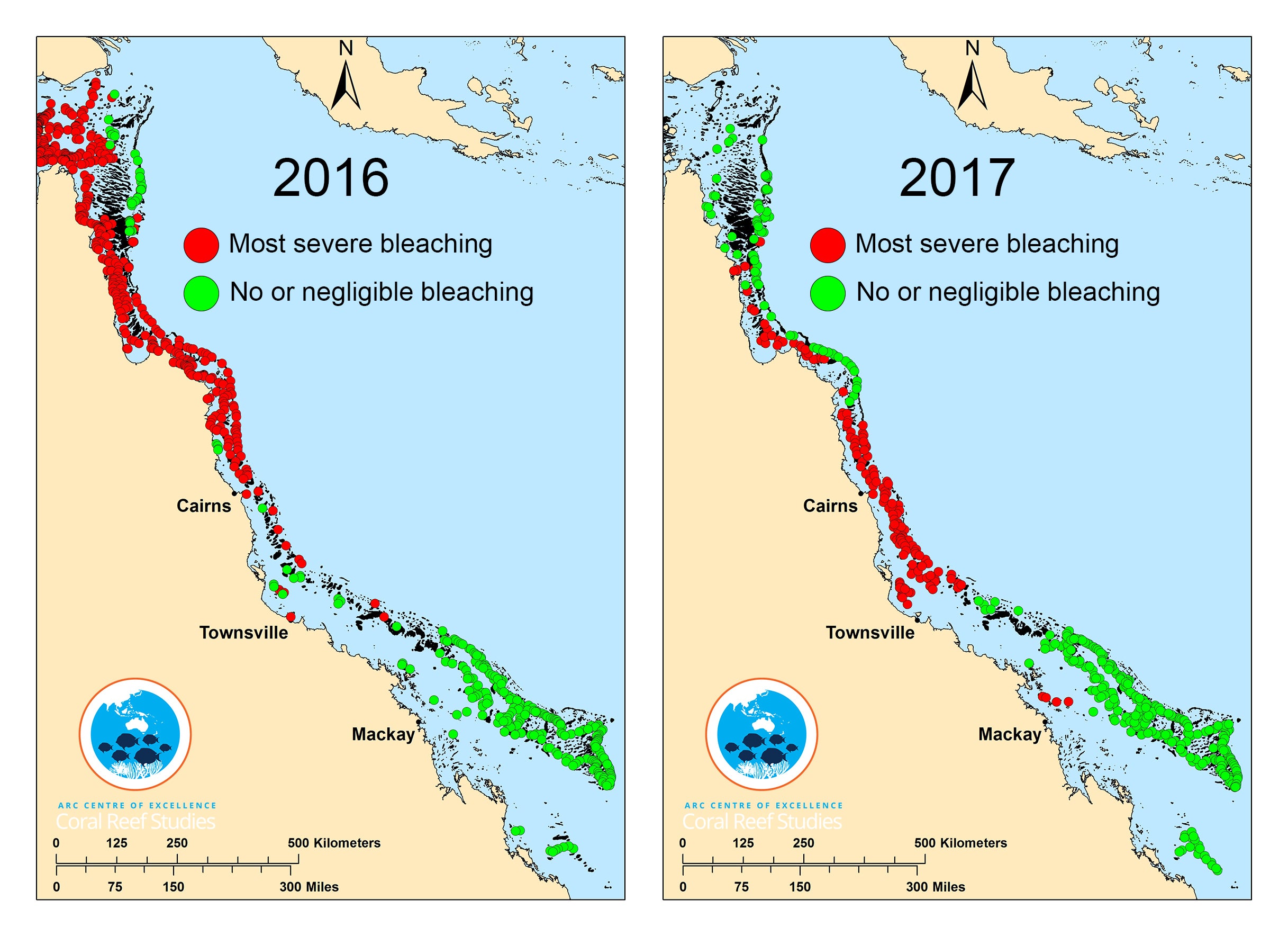Great Barrier Reef experiencing most widespread bleaching on record due to climate change
Mark Eakin, coordinator for the National Oceanic and Atmospheric Administration’s Coral Reef Watch program, described the event as 'unprecedented' and 'truly disturbing'
Your support helps us to tell the story
From reproductive rights to climate change to Big Tech, The Independent is on the ground when the story is developing. Whether it's investigating the financials of Elon Musk's pro-Trump PAC or producing our latest documentary, 'The A Word', which shines a light on the American women fighting for reproductive rights, we know how important it is to parse out the facts from the messaging.
At such a critical moment in US history, we need reporters on the ground. Your donation allows us to keep sending journalists to speak to both sides of the story.
The Independent is trusted by Americans across the entire political spectrum. And unlike many other quality news outlets, we choose not to lock Americans out of our reporting and analysis with paywalls. We believe quality journalism should be available to everyone, paid for by those who can afford it.
Your support makes all the difference.The Great Barrier Reef has suffered the most widespread bleaching ever recorded due to rising temperatures caused by climate change.
It is the third severe coral bleaching event for Australia’s iconic reef in just five years.
Corals along the entire 1,400-mile stretch have been severely affected, according to surveys by the Great Barrier Reef Marine Park Authority and James Cook University in Australia.
The bleaching has been caused solely by a summer of extreme heat, unlike in past years when El Niños — weather patterns caused by warming of the Pacific Ocean close to the Equator — contributed to the conditions.
It is a troubling indicator that climate change caused by human activity is the main factor behind coral reef bleaching.
“We surveyed 1,036 reefs from the air during the last two weeks in March, to measure the extent and severity of coral bleaching throughout the Barrier Reef region,” said Professor Terry Hughes, director of the ARC Centre of Excellence for Coral Reef Studies at the university.
“For the first time, severe bleaching has struck all three regions of the Great Barrier Reef – the northern, central and now large parts of the southern sectors.”
When sea temperatures spike, corals expel the marine algae, called zooxanthellae, which live inside their tissues, giving them vibrant colours and food supply via photosynthesis.

Expelling the algae is what turns the coral white and without a food supply they can starve, according to Marine Conservation.
The first recorded mass bleaching in the Great Barrier Reef was in 1998, then the hottest year on record.
Since then, four more bleaching events have occurred, in 2002, 2016, 2017 and 2020, as the temperature records continue to be broken.
As the gap between bleaching events shrinks, it prevents the coral from making a full recovery.
February 2020 hit a record high temperature for that month in the Great Barrier Reef.
Mark Eakin, coordinator for the National Oceanic and Atmospheric Administration’s Coral Reef Watch program, described the rate of return of these events as “truly disturbing”.

In an email, he told The Independent: “In 2016 and 2017, the Great Barrier Reef had their first back-to-back bleaching events. Now we have the third bleaching event in five years. That is unprecedented on the Great Barrier Reef.
“However, the most troubling is that this bleaching event happened without any tropical forcing.
“In 2016, an El Niño was underway after an almost-El Niño the year before. In 2017, an El Niño had just ended and we had move straight past neutral conditions to a La Niña. Both of these have impacts on heat in the tropical Pacific Ocean, changing the normal patterns.
“In 2020, there were neutral conditions with no strong El Niño last year. It’s now clear that we can have major bleaching events caused by global climate change alone with no tropical forcing.”
On 2 April, Dr David Wachenfeld, chief scientist at the Great Barrier Reef Marine Park Authority, gave an update on reef health after aerial surveys were done on more than 1,000 reefs that make up the Great Barrier Reef.
Dr Wachenfeld said that in the south, they found reefs that had bleached severely for the first time this year compared to 2016.
He said that bleached coral is “stressed” and “starving” but it is not dead.
On reefs where the bleaching was negligible or moderate, he said that it was likely that many of those corals would survive which was essential for their future recovery.
On the reefs that were more severely bleached, there would likely be higher levels of coral death but it was still variable, he said.
The researchers will continue to assess the coral damage throughout the year.

Join our commenting forum
Join thought-provoking conversations, follow other Independent readers and see their replies
Comments